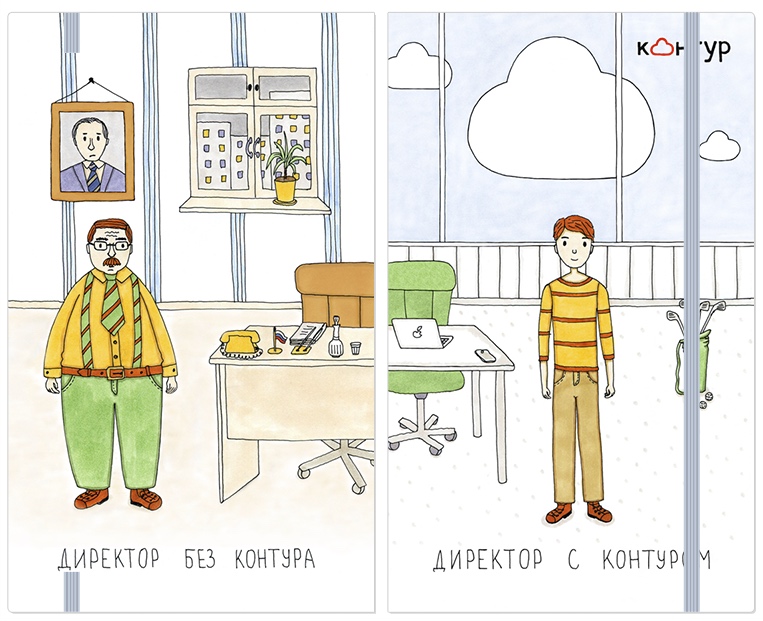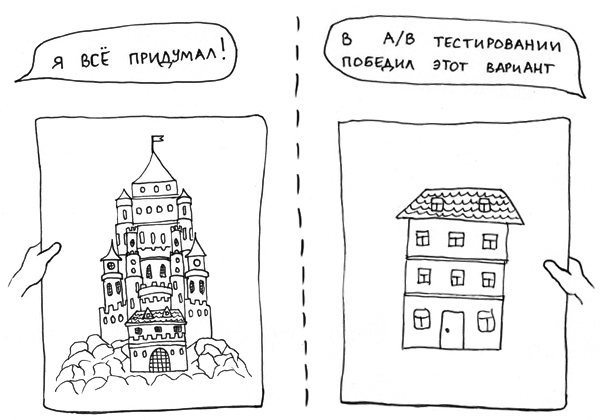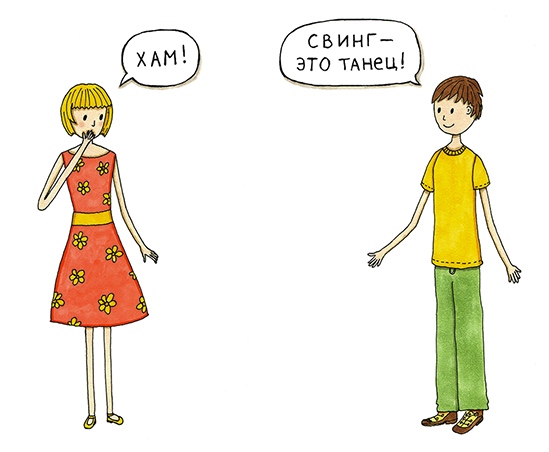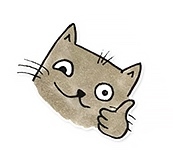Interview with the designer: Olga Romanova

I continue a series of interviews with interface designers. Today’s with Olga Romanova from Elba. Discussed:
- how to design user-friendly interfaces for a difficult item;
- how to solve complex tasks and grow professionally;
- how to learn illustrations from scratch;
- who to focus on in the industry.
As a gift: guides for interfaces and stickers with cats for telegram ツ
Tell us briefly about yourself: what do you do, where and what are you working at, what are your hobbies besides work
 Now I am designing interfaces in Elba , this is a project of SKB Kontur. The company is large, it has 4.5 thousand people, most of it is in Yekaterinburg. Elba is a small project, 25 people.
Now I am designing interfaces in Elba , this is a project of SKB Kontur. The company is large, it has 4.5 thousand people, most of it is in Yekaterinburg. Elba is a small project, 25 people.
In addition to work, I enjoy calligraphy and lettering. I am learning a little bit of an illustration, some time ago I was actively drawing comics in my blog, now it’s less, maybe this is temporary and I will be captured again :) Sometimes I write reviews on books.
The illustrations in the article are drawn by Olga
You design the Elbe interfaces in the Contour. Tell about this project?
In the Elbe, I spent half a year, and before that, 4.5 years, I designed Contour. Accounting. The service helps entrepreneurs and small organizations to conduct their business and report to the state. This bookkeeping, understandable to mere mortals. No need to be an 80 level accountant to figure it out.

The image of a “director without a contour” shook the business circles of Yekaterinburg and almost led to the resignation of the head of the region (in fact, not).
For the director of accounting is a whole new world. We try to simplify, so that users don’t even think about what works in accounting, we don’t burden them with complex knowledge and subject matter. Business owners are busy guys, why do they need it. It is better to bypass the incomprehensible, make it as easy as possible. There is no task to teach accounting, the task is to introduce it as little as possible. Somewhere about something you can keep silent. The main thing is for the director to submit reports on time, and easily solve his work tasks on his own.
Elba is known for its user-friendly and humane interface. How do you do it?
First, we know our user quite well. This helps usability testing, surveys, information from technical support, analytics and statistics.
On testing, we show the user both clickable prototypes and a working service. Sometimes after testing the concept changes a lot, the prototype is redrawn and re-tested. But most often, just make edits, and the layout goes into development.

Olga tests simple hypotheses with “corridor” testing, things are more complicated - on user research.
Technical support from Elba round the clock and good quality. This is also our advantage. Information comes from calls, from feedback forms, mail, and from another interesting tool - likes. There are buttons on each page of the service: with a finger up, a finger down and an envelope. It was conceived as a quick feedback - like it or not. In life, users write there any questions, requests for help. That is, we have to actively monitor this channel, and not just occasionally analyze.
The second thing that helps make Elbe comfortable is the awesome involvement of each team member in everything that happens. Not only the designer and the manager deal with the user, everyone takes an active part in making the Elbe a little better.
For example, one tester suggested launching a quiz with questions to users about our service - in order to understand whether users are aware of all the functionality. This is important because you can do a lot of useful things, but if users do not know much about it, then our efforts and the whole service are worthless. In the quiz there were questions like “can I send an invoice to several postal addresses at the same time?”. At the end of the quiz, users received a gift from Elba - free service for a period of time.
Thirdly, we communicate with users in a rather informal way, as we would in everyday life. This maintains a sense of friendliness, and that the Elbe is closer to the user. So we want to be.
In general, we make a service that you yourself would like to use.
How do you design what's your process? How do you test hypotheses?
When a good solution cannot be implemented, then you simply throw on options like brainstorming. Doodles on the leaves are quite suitable. Sometimes it is useful to ask the second designer, so there will be more ideas. Or another person from the team. Any answers may suggest a good idea. This is the case for simple little things, when you just need more options.
If the task is more complicated and you need to come up with something conceptual, think through the scenario of a new big task, it’s obviously not enough one head. Then I take the second designer, and we leave somewhere, so that no one distracts. Everyone draws on the task their own solutions, any thoughts on the topic. Greater detail of the screens is not needed, just grasp only the concept. If there are any interesting thoughts on specific things, also fix. It is better to sketch everything that comes to mind, then it may come in handy.

The user does not care what tricky mechanisms and algorithms are hidden on the other side of the interface. It is important how to get what you want at the moment. Do not overload.
In half an hour, when everyone is “already everything”, we show each other, we find interesting solutions in each other’s sketches and cross them. In this way, more good ideas are born than when you immediately sit down and think together thoughts aloud. It helps not to miss important, interesting, not to affect the course of thoughts of the second, so that everyone has a chance to bring something.
You draw wonderful illustrations and actively apply them in your life: in the design of your personal site, on bank cards, diaries, postcards for friends and relatives. It seems that illustration means a lot to you. Tell me about this hobby?
It all started with very simple comics. If someone has the patience to finish my blog to the end, then this someone will see there are not very nice pictures. Children in kindergarten draw better, probably :) But it was funny, I did not care how or who would appreciate it. I expressed myself. Drawn almost every day. And if you do something often, it can be well pumped. The hand begins to draw lines of lines. Then you start to be interested in the illustrations of other designers, trying to understand what it is worth paying attention to, which is important for the characters. That is all by itself. Interest and curiosity drives everything.

In the corporate style, Olga designed the main page of her site, it turned out pretty
Then there was a two-day intensive from Steve Simpson in Yekaterinburg. We painted a label on a bottle of wine for St. Patrick's Day. I was scared. Because there were real illustrators there, and I'm here with my home comics :) But everything went well, I really liked it. Then I became quite bold and went to an awesome weekly course in Italy, taught by various illustrators. Lived on the campus of the Vesuvian Institute of Humanities. We went to cities, made sketches, were at the excavations in Pompeii, climbed to the crater of Vesuvius. As a result, we learned to draw a book cover. For me there was a lot of new useful knowledge. And impressions of the sea.
Then I quite accidentally got on a course in calligraphy for beginners to Lev Lieberman . It is also tightened. After a short course I went to him for a one-year course. He is still in the process, passed only the first block - antiquity. Now I go to lettering at the same teacher. And yesterday I started a course in commercial illustration at the Kalacheva school .
Often my interest in something grows out of interest in tools — hunting to try a pen or a cunning marker, how it behaves, what they can do. Or out of interest “how are they doing this?”, As in a watercolor there are some effects - I want to repeat and learn.
I also had an interesting story with stickers in the Telegram. I drew the cats , laid them out, and they somehow took off fantastically. I never thought it would be like that. Now they are installed in 18 thousand people. For all the time, people sent each other 135 thousand stickers. The second pack with cats for developers is installed in 16 thousand people.
What tools do you use in your work? What are your favorites?
Work is design, and there are prototypes in Sketch, nothing out of the ordinary. We communicate with the team in the Telegram and verbally. Bazhiki and small puzzles in our Yutrek. Trello also comes in handy sometimes. Recently saw notion.so, we think, for what it may come in handy, I liked it. And Dropbox has something similar now, Paper. In it, I wrote answers to the questions of this interview.
In calligraphy, I fell in love with bras, hand calligraphy. I drew illustrations with markers, mostly Copic. I had a lot of different markers, brushes, feathers, ink.

When you design, draw in Sketch at once a ready interface layout with all styles or mock-ups? If mockups, how do they turn into an interface?
There are many routine tasks when it is not necessary to invent something. Just add some simple thing, and there are no options, as it will be - and so everything is clear. Then you just take the old prototype and add this thing to the right screens.
If there are options and you need to choose, then first paper and pencil. On paper, I think well, and this is fast. And then Sketch. In the Contour there is a library of controls, it has all sorts of buttons, fields with styles.

Contour.Guides - requirements for the behavior and design of user interface elements.
Some time ago, in Contour, it became clear that it was not good in every project to do everything differently. These are products of one company, there should be recognition, and the user can buy several services. Well, when the same elements look similar and are in the usual places. It also saves development time: each project does not reinvent the wheel, but takes control from a special library.
Therefore, they began to standardize different controls and even behavior. Made "Kontur. Guides": key design principles, library of controls, icons. In the same place reference imposition. If someone our standards will be useful - we are only for. Knowledge is necessary to fumble.
What helps you grow professionally as a designer?
Constantly look around, notice what is happening. To notice someone else's experience and form your own. Try to think outside the box, go beyond. Surprise, have an interest in everything, ask questions. Enjoy the process, what you do. Understand that you can influence a lot and much can depend on you. Do not stay away, interfere. If something does not work, try again and again, do not focus on failures. Try another or in other ways. Never stop. Movement is life, not only in the physical plane, but also in the development of oneself.
Which famous people in the industry are you targeting?
I glance over what is happening in the Gorbunov Bureau, in Lebedev Studio.
In the Contour, we all love Maxim Ilyakhov. He came to Kontur in 2013, spent a three-day intensive on the info-style man for 10. I was also on this course. The effect is amazing, consciousness turns over. You cannot look at old texts, you notice all the shoals and think how I could write like that. Interface texts have become much better.
More recently, we had Igor Shtang . It was very interesting and helpful. Ludwig is also cool. In the Contour, he was not, but was in Yekaterinburg. I did not get to him, but I would like to.
What is your "trick" in the design of interfaces - reception, life hacking, secret?
Not that life hacking, but there is one utility. When you design, you have to communicate a lot. Sometimes there is more communication than the actual drawing. Discussions of tasks, what and how to do, in what form, in what volume, how to fix something, what to leave and not touch, and what certainly should be changed.
We have to negotiate a lot, but people are different. Someone more emotional. Then it is useful not to connect to this and not respond to the tone, but rather, how to slow down everything. Take pauses "to think", speak calmly and confidently. The calmer you speak and the more reasonableness in the answers, the more quickly the interlocutor begins to think more and not to emotion. It usually works.
Well and another important thing, you need to understand why the interlocutor insists on something, you have to get into his skin and try to treat it. Get up on his side and row together.
Do you want to give advice or advice to fellow designers?
To most around seriously fascinated and it was interesting. From this you get a lot of fun. And the quality of what you like is higher. As a result, it turns out that the benefits are not only to you, but also to the world around. In general, a proactive position is good. When you do not pass by some garbage, but you see that you can improve it, you take it and you do it. Making the world a little better is cool.
Olga on Habré - ola
')
Source: https://habr.com/ru/post/316682/
All Articles
